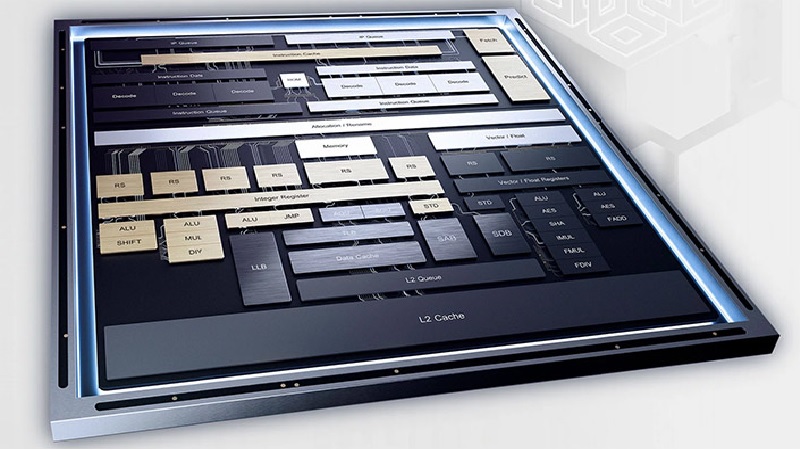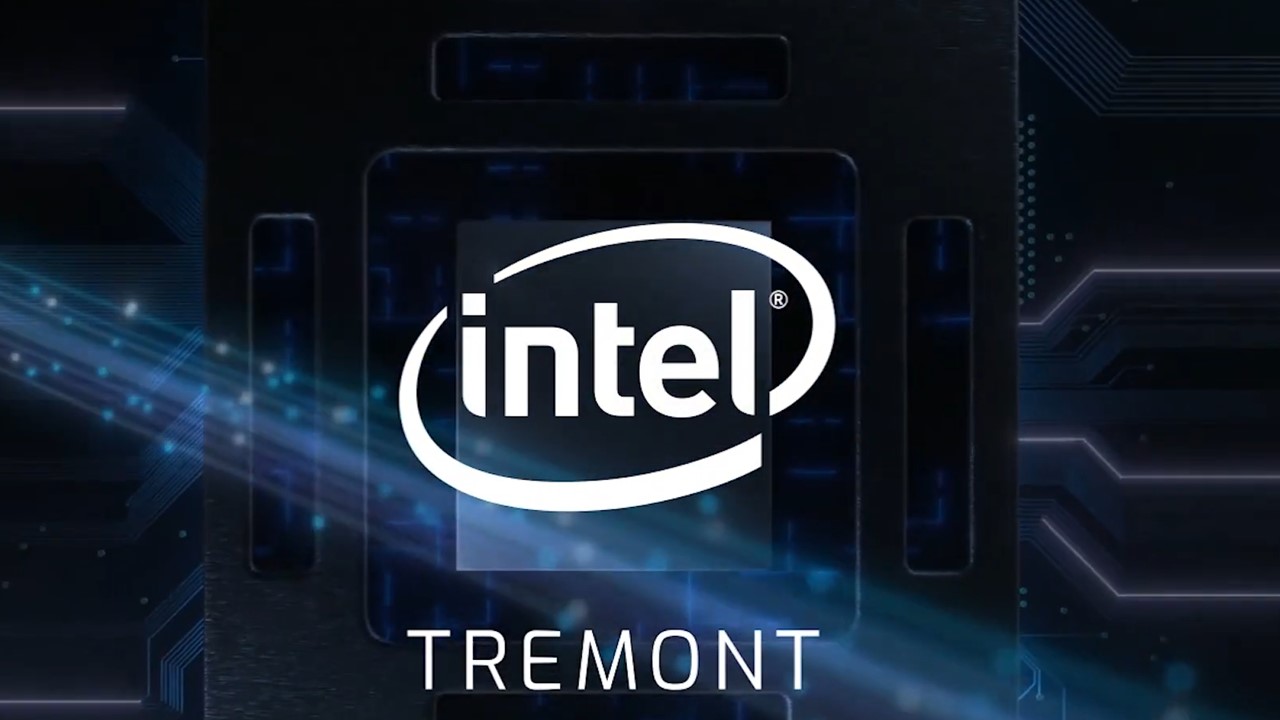In This Article
What is Tremont Processor?
The Intel Tremont processors refer to the chips manufactured on the 10 nm process with a superscalar pipeline and an x86-64 Instruction Set Architecture (ISA) and a core configuration ranging from two to twenty-four.
Technically, the Tremont processors are built with a redesigned front end and back end with better decoding and execution abilities.
The Tremont x86 architecture also supports a lot of instruction extensions and tri-gate transistors.
KEY TAKEAWAYS
- Designed and manufactured by Intel, the Tremont processors, successors to the Goldmont Plus processors, are built on a 10 nm fabrication process with 3D tri-gate transistors.
- Apart from the die shrink, the SoC architecture design allows the Tremont Lake processors to be used in several ultra low-power client devices and micro-servers.
- These processors also boast of supporting a large number of Instruction Set Architectures and extensions including a few new instruction sets such as CLWB, ENCLV and others.
- Designed and introduced by Intel in 2019, the microarchitecture of the Tremont processors features a pipeline that supports out-of-order and speculative executions.
- The useful design aspects of these processors allow them to offer a reasonably high performance and they are known for their improved cryptography.
Understanding Tremont Processor

Ideally, the term Tremont refers to the microarchitecture for low-power Celeron, Atom, and Pentium Silver branded CPUs that are used in the Systems on a Chip or SoCs designed by Intel.
These processors are the successors of Goldmont Plus processors and the predecessors of Gracemont processors.
There are different core names and platforms on which Intel released the 10 nm Tremont core at different times, such as:
- Jacobsville
- Elkhart Lake
- Jasper Lake
- Snow Ridge
- Lakefield
Ideally, the low-power, next-generation, x86 microarchitecture of Tremont processors, with their higher IPC, offer significant gains over other generations.
Design and Technology
The Intel Tremont processors are designed on the 10 nm manufacturing process and use 3D tri-gate transistors in the System on a Chip (SoC) architecture.
These 3rd generation low-power, out-of-order architecture is typically designed for use in entry level desktops and notebook computers.
In fact, the compact design and low-power package of these processors enable using them in a breed of new generation of pioneering form factors which include:
- Client devices
- The Internet of Things (IoT)
- Competent data center products
- Several creative applications and more.
As compared with other x86 architectures, the improvements in the design and technologies of the Intel Tremont processors can be summarized as follows:
- It offers a much improved branch prediction unit.
- It comes with enhanced capacity for indirect and path-based conditional prediction.
- There is a dedicated return stack buffer included in the design.
- There is an original, 6-wide, clustered, out-of-order front-end fetch and decode pipeline included in it.
- The banked instruction cache supports dual 16 B reads.
- There are two 3-wide decode clusters that help in handling up to 6 Instructions Per Cycle (IPC).
- A 32 KB data cache is included in the design in place of 24 KB.
- There are deeper out-of-order back-end windows.
- The architecture comes with bigger load and store buffers along with dual generic load and store execution pipes that support 1 load and 1 store, or 2 loads and 2 stores per cycle.
- It includes dedicated integer and vector integer or floating point store data ports.
- It comes with newer and more improved cryptography.
- The Level 2 cache is shared per four-core cluster and measures between 1.5 MB and 4.5 MB.
- The shared Level 3 cache measures 4 MB.
- The architecture supports the Gen 11 integrated graphics processor with DirectX 12, Vulkan 1.3, OpenCL 3.0, OpenGL 4.6, and OpenGL ES 3.2 support.
Typically, in comparison to the architecture of its predecessor, Goldmont Plus, the architecture of the Tremont processors is better designed to offer much better single-threaded performance.
However, the focus is also on the low-power, small, and silicon cores.
A couple of notable changes made to the design are:
- A notable boost in IPC and
- A better execution engine with double store data ports.
The front-end is also redesigned and now it comes with the following features:
- A better dual, symmetric decoding cluster
- Out-of-order decoding feature support
- Better prefetch
- Enhanced branch predictor to offer big-core level of performance
As for the redesigned back end, the features included are as follows:
- A bigger Reorder Buffer or ROB
- 10-wide issue
Versions
There are different versions of the Intel Tremont processors available with different features.
For example, the mobile processors come with the following features (which may vary depending on the specific model in question, however):
- They usually come with 2 to 4 cores.
- They are branded as Pentium Silver, Celeron, and Intel Core i3 and Core i5 processors depending on their core types.
- They also come with an integrated Intel UHD Graphics Processing Unit with the number of execution units ranging from 16 to 64.
- The base and boost operating speeds of the processors range between 0.8 GHz and 3.3 GHz.
- The base and boost operating speeds of the GPU range between 200 MHz and 900 MHz.
- The Thermal Design Power or TDP of these processors usually ranges between 7 watts and 15 watts.
The server Tremont processors that are designed for use in the base transceiver stations typically come with the following features:
- The number of cores ranges between 8 and 24.
- The brand name used for these processors is Atom P.
- The base clock speed of the CPUs is 2.2 GHz.
There are also a few embedded Intel Tremont processors available that come with the following features:
- The number of cores ranges between 2 and 4.
- These processors are sold under the brand names Pentium, Celeron, and Atom.
- Most of these embedded processors come with a UHD graphics processor with base and boost operating speeds ranging between 250 MHz and 850 MHz.
- The base and boost operating speeds of the CPU cores range between 1 GHz and 3 GHz.
Compiler and Pipeline Support
Apart from Visual Studio, the Tremont processors also offer different compiler support such as:
- ICC or Intel C/C++ Compiler
- GCC or GNU Compiler Collection
- LLVM or Low Level Virtual Machine
The Tremont CPUs also support a pipeline with the following features:
- It is superscalar in nature.
- It supports Out-of-Order Execution or OoOE.
- It also supports speculative execution.
- It allows register renaming.
Instruction Set Architecture and Extension Support
The Tremont processor supports a lot of x86-64 or Intel-64 Instruction Set Architecture along with a wide range of new and old extensions of theirs, such as:
- MOVBE or Move Data After Swapping Bytes
- MMX or MultiMedia eXtensions
- SSE or Streaming SIMD Extensions, along with all its variants such as SSE2, SSE3, SSSE3, SSE4, SSE4.1, and SSE4.2
- User-wait instructions such as TPAUSE or Time Pause, UMONITOR or User Level Set Up Monitor Address, and UMWAIT or User Level Monitor Wait
- Direct store instructions such as MOVDIRI or Move Direct Immediate and MOVDIR64B or Move 64 Bytes as Direct Store
- POPCNT or Population Count
- AES or Advanced Encryption Standard
- CLMUL or Carry-less Multiplication
- FSGSBASE instructions for FS and GS segment registers
- RDRAND or Read Random
- XSAVE or Save Processor Extended States
- SGX or Software Guard Extensions
- SHA or Secure Hashing Algorithm
- UMIP or User Mode Instruction Prevention
- VT-x and VT-d or Virtualization extensions
- XSAVEOPT or Save Processor Extended States Optimized
- PTWRITE to write data to a processor trace packet
- RDPID or Read Processor ID
- GFNI-SSE or Galois Field New Instructions Streaming SIMD Extensions
- CLWB or Cache Line Write Back
- ENCLV or Enclave instructions
- AES-NI or Advanced Encryption Standard New Instructions
- CLDEMOTE or Cache Line Demote
In addition to that, the processor architecture also supports Split Lock Detection, which helps in detecting and causing an exception for split locks.
Conclusion
The Tremont CPUs are built with performance and power in mind.
The features included in its design help in offering a large uptick in the clock-for-clock output as compared to its ancestor.
The CPU has everything to drive about a 30% boost in its activity, which is quite a jump by any measure for different CPU generations.
